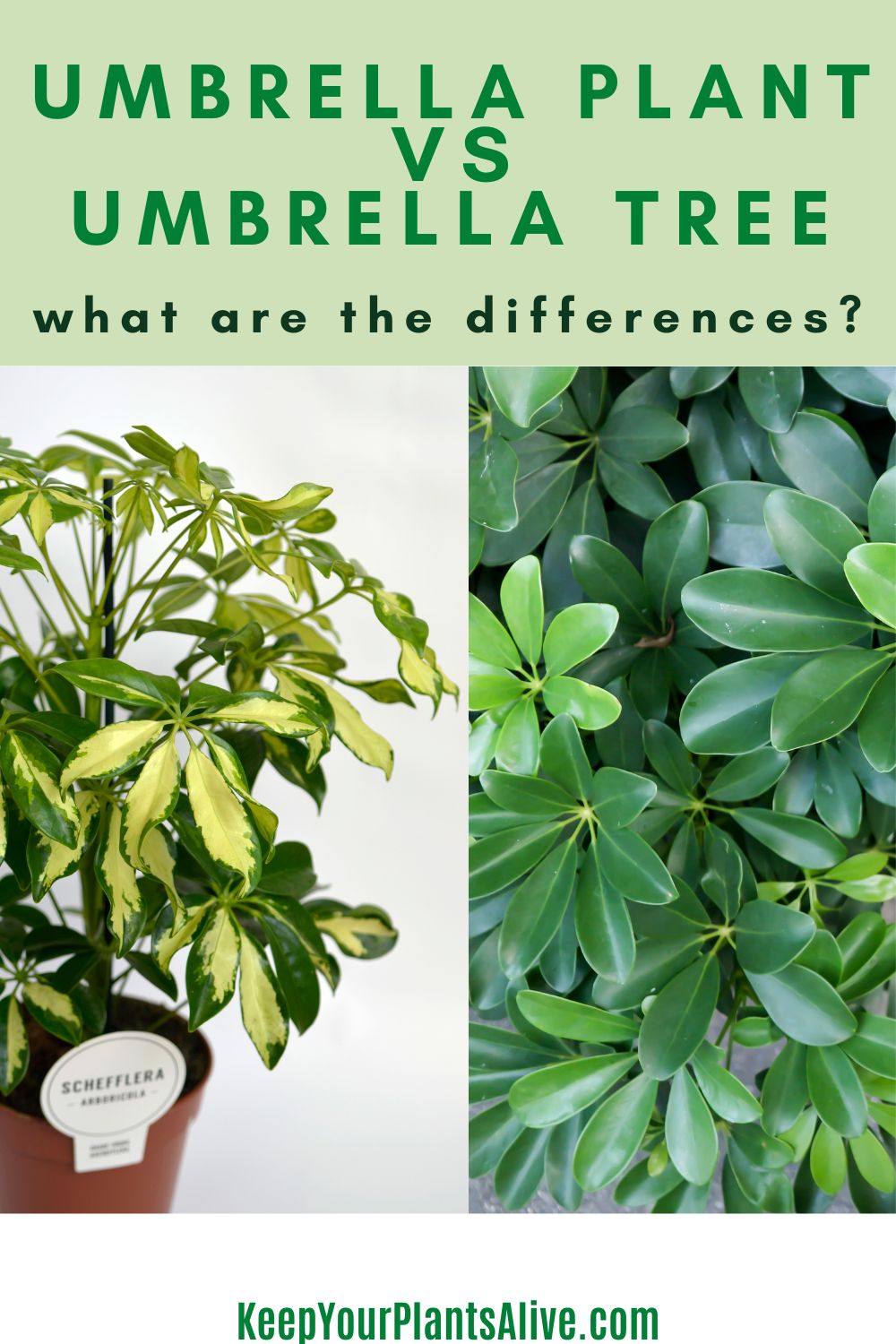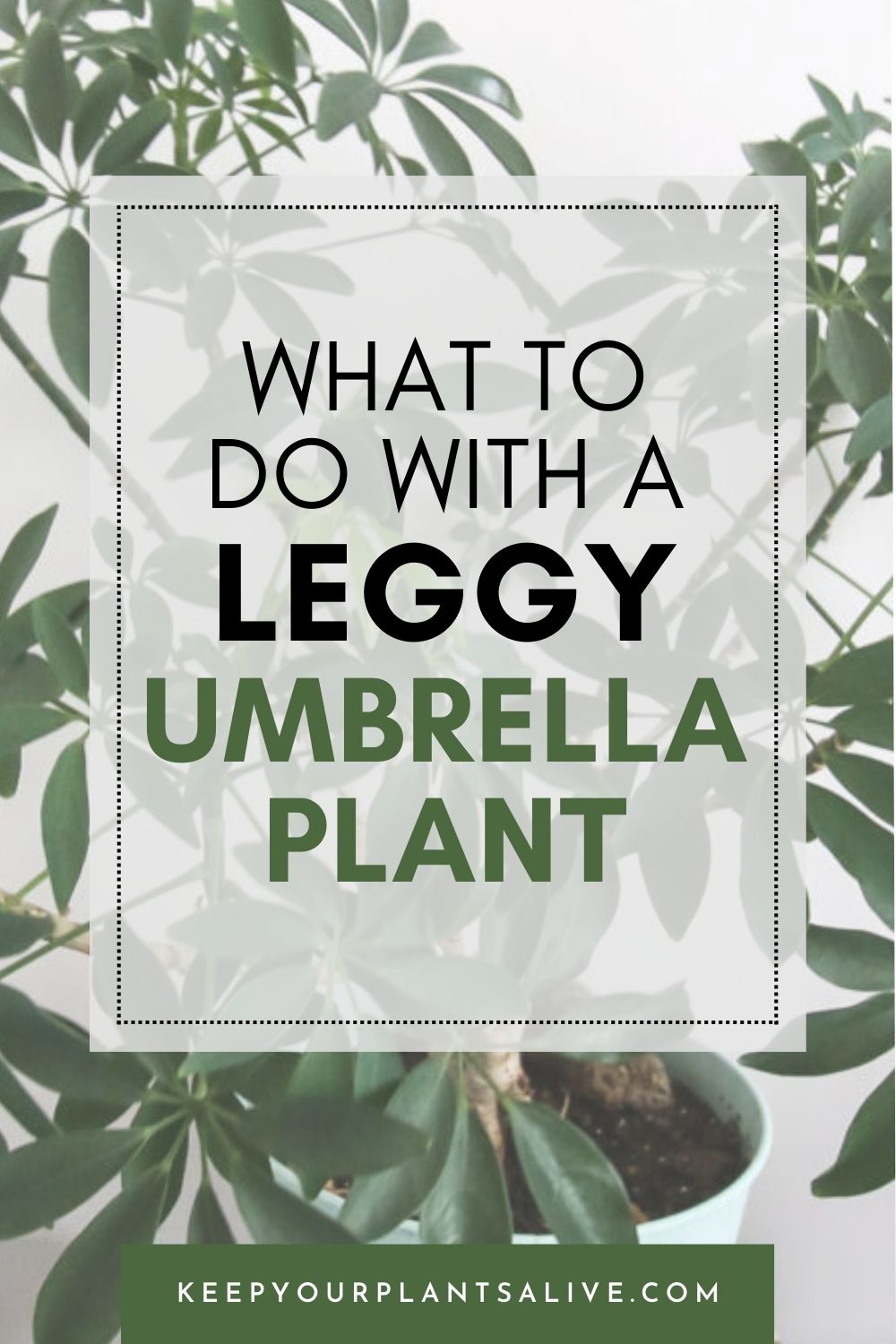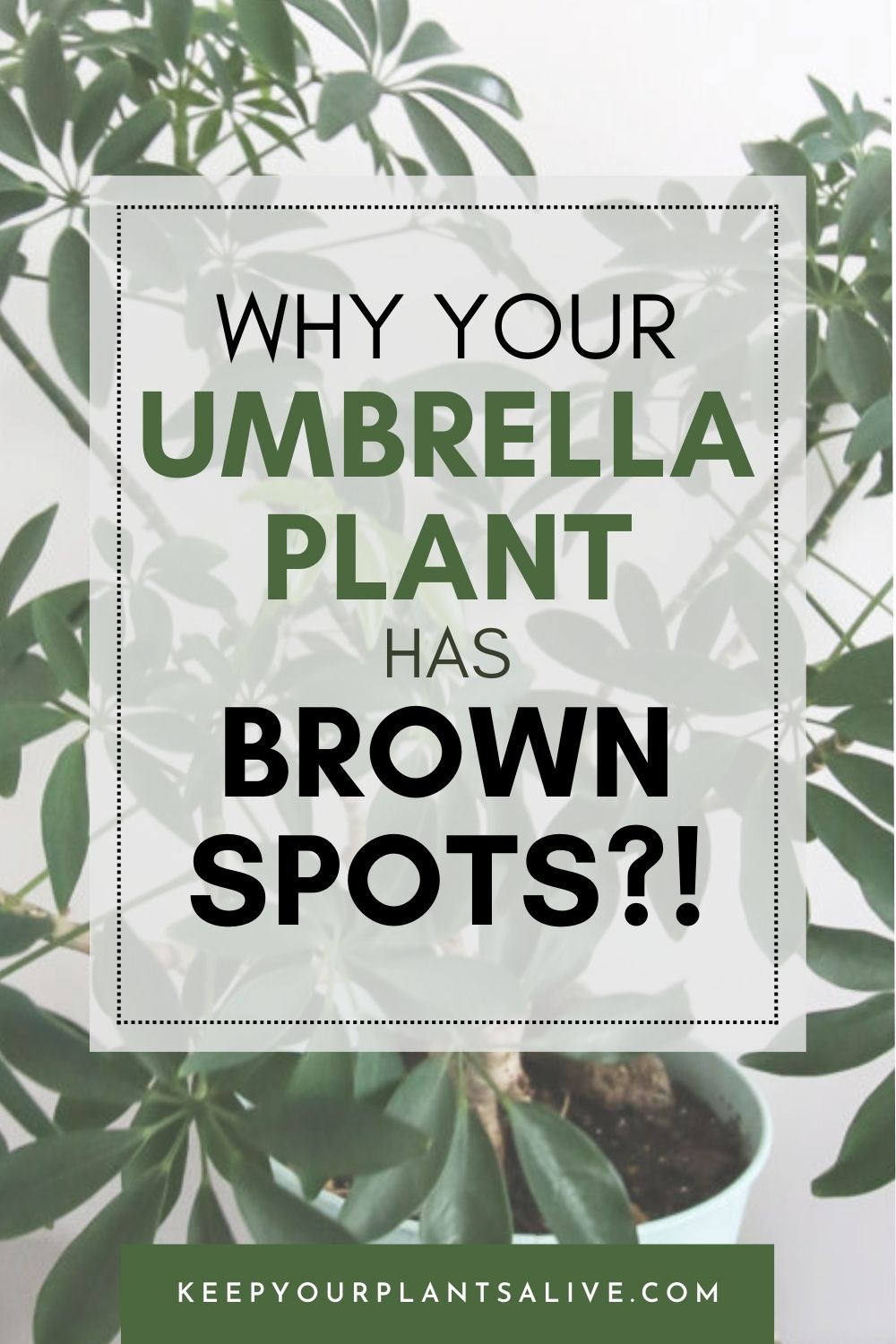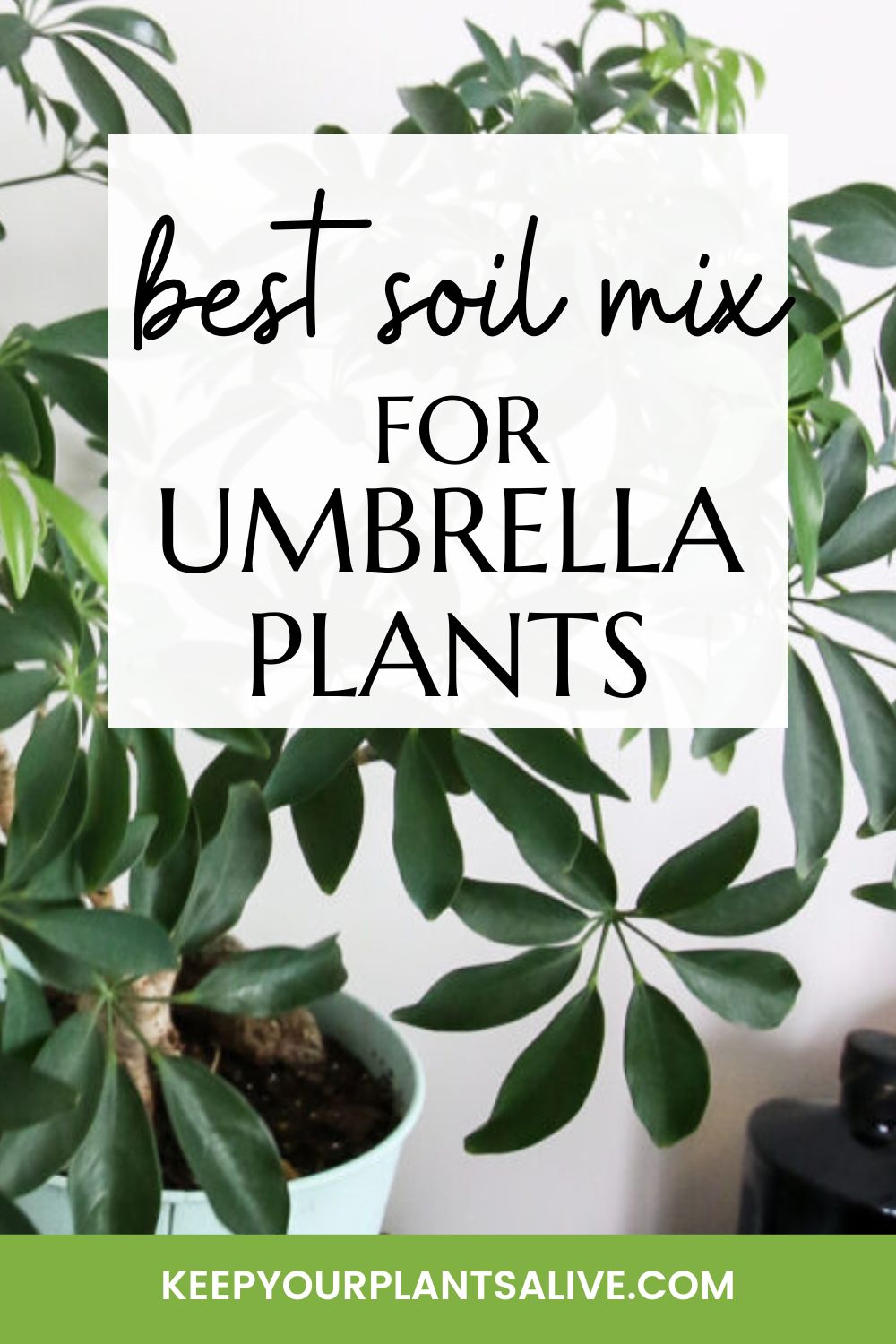Umbrella plants are easy care houseplants that don't require much maintenance. However, they do sometimes need to be repotted. Here's how to know when to re-pot an umbrella plant!
Shefflera, also known as the Umbrella plant, is probably one of the most common plants you can find in a home or an office. It is considered one of the most beautiful tropical plants.
Moreover, It is easy to grow, even easier to maintain, and it can live for quite a long time.
However, after a certain time, as the plant grows, it comes with some specific needs, which include transplanting it to a bigger pot.
In this case, if you are unfamiliar with the process, you have landed on the right page! We are here to give you the support you need while doing this, so stay tuned.
Today, we are talking on the subject of when to re-pot an umbrella plant.
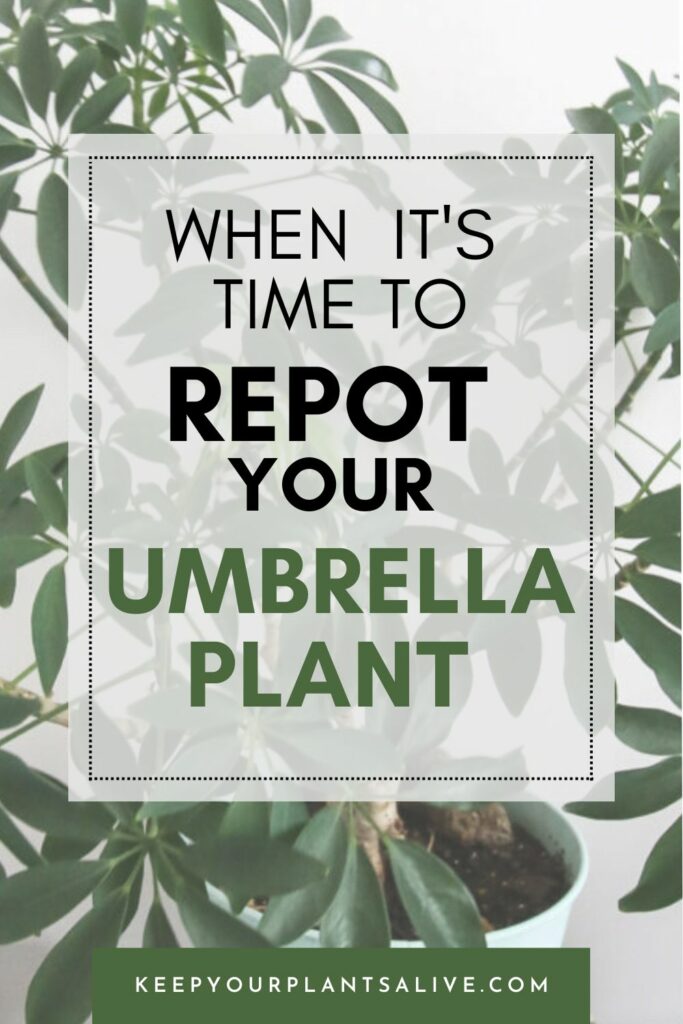
Want more umbrella plant content?
- Umbrella plant care guide
- How to propagate an umbrella plant
- Why is my umbrella plant dying?!
- Are umbrella plants toxic?
- When to repot an umbrella plant
- Can an umbrella plant live outdoors?
- Why is my umbrella plant dropping leaves?
- Why is my umbrella tree turning black?
- Why is my umbrella plant getting yellow leaves?
- Why are my umbrella plant leaves turning brown?
- Why does my umbrella plant have sticky leaves?
- Why is my umbrella plant wilting?!
- How to train your umbrella plant to grow in a specific direction
Printable Umbrella Plant care guide
Join the (free!) KeepYourPlantsAlive+ community to access this exclusive printable plant care guide! Once you sign up, you can right click & save the JPG care guide. Or keep scrolling for more!
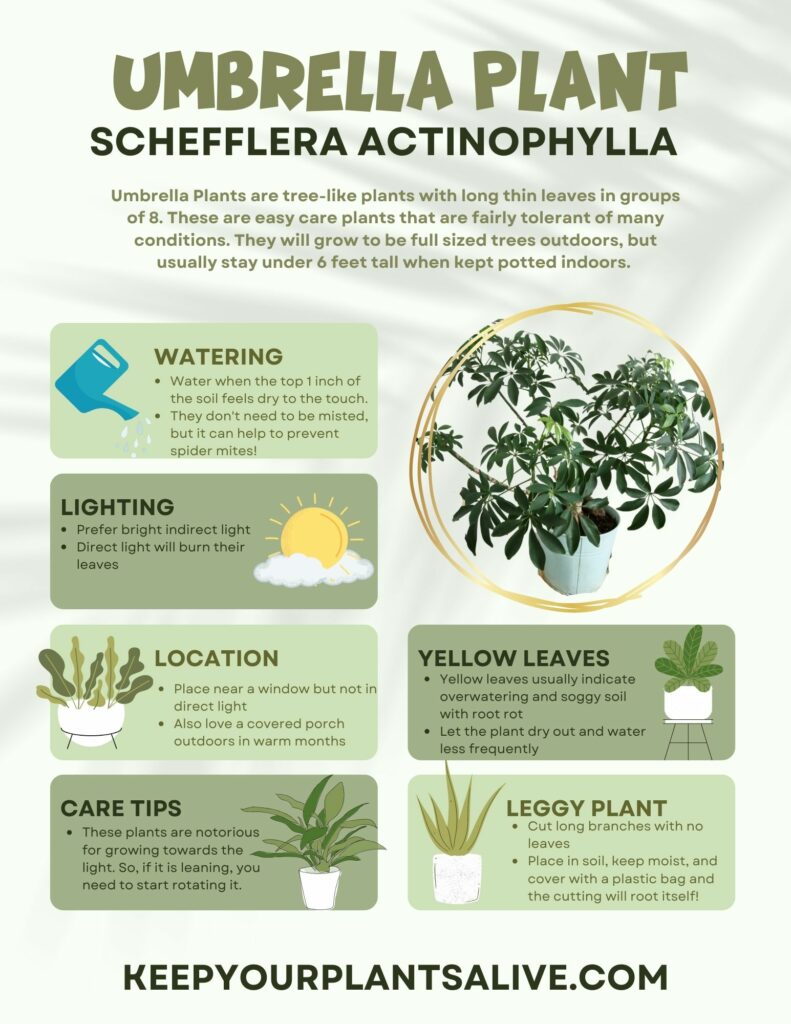
How to prepare to re-pot an umbrella plant
Re-potting an umbrella plant takes a little bit of planning. Therefore, there are a few things to consider before plunging into work.
Choose a pot
First, you need to think about the pot where you will place your plant and make sure it is much larger than the one it is in at the moment.
Additionally, check whether your new pot has room for proper drainage.
Select your soil
Second, you should ensure you use the right soil for your Schefflera. If you find this a little bit confusing, then allow us to elaborate.
There is such a thing as the best potting soil for an umbrella plant. When looking into the best potting soil, think of performance.
You need to look for soil that will give good drainage – generally, the best one for this specific plant is sandy potting soil. If you cannot find this, you can use general-purpose potting soil too.
But, in this case, you should add a little sand or perlite to it to allow for better drainage. You can also turn to some richer soil, such as the African violet or orchid mixes.

When to re-pot an umbrella plant
In general, you want to repot your umbrella plant:
- At the beginining of growing season
- When it is root bound
- If the soil is staying soggy
- Every 3 years
Best time of year to repot
When it comes to the season, think cold. Early spring or late winter is the best time for re-potting Schefflera.
This is the beginning of the growing season and let's your plant have plenty of space and time to grow for the rest of the year!
Considering maintenance and dealing with new growths, this is the best time to get your hands dirty.
Other times to repot your umbrella plant
Once the tree becomes root bound, you will know it’s high time to re-pot it. However, you may need to do the re-potting in some other instances as well.
When you ask yourself when to re-pot an umbrella plant, the answer may lie in the soil too. If you notice that the soil is always damp and there is not enough drainage, this can contribute to root rot.
At this point, you need to act fast – get your tools out and start transplanting your umbrella plant as soon as you notice some strange activity.
Either way, there is one thing you should keep in mind.
You need to re-pot your umbrella plant every three years, despite the plant's conditions and growth.
Even if the plant is not root bound, practicing transplanting within this timeframe will give your Schefflera a breath of life, and some fresh soil to enjoy.
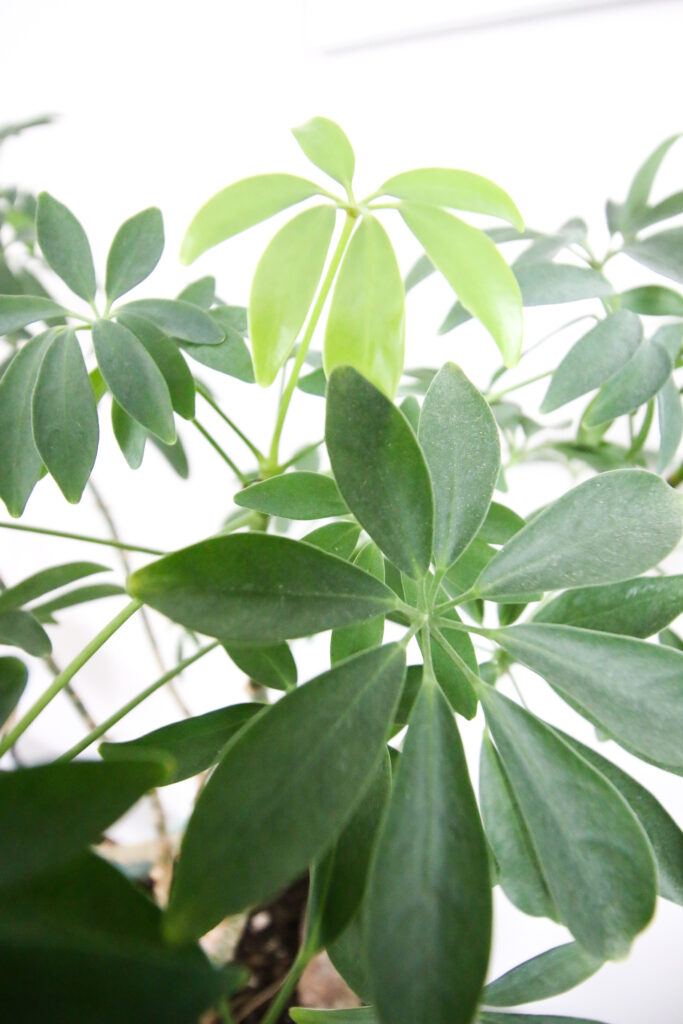
How to re-pot an umbrella plant
If you have found an appropriate container, it is time to start the re-potting process.
Firstly, remove the plant from its current pot. If you haven’t transplanted your plant at all, you may notice that the roots are overgrown.
In some cases, they might even be tangled up. If so, make sure that you untangle them gently, provided that you don’t want to do any further damage.
Keep in mind that if you consider the roots to be a little overgrown, it is okay to prune them a bit. In an ideal scenario, the roots should have enough room to spread out and for new, feeder roots to grow back as soon as possible.
Let’s talk tools!
Grab your bottle of alcohol that you use for sterilizing tools and get a sharp knife. Sterilize it before you do any planting.
In case your plant is root-bound, you may need to use a butter knife too. If you think re-potting Schefflera will need more hands on deck, then you can ask for some help.
Going back to the soil, it is good to think about the best potting soil for an umbrella plant again.
Another thing you should remember in terms of the soil is that this is a plant that prefers an acidic environment. When choosing your base mix, the pH level should be between 6.0 and 6.5.
Prepare the plant!
No plant wants to be shifted from its place, so thinking about when to re-pot an umbrella plant means you should prepare it too.
Get everything ready ahead of time and start checking the plant.
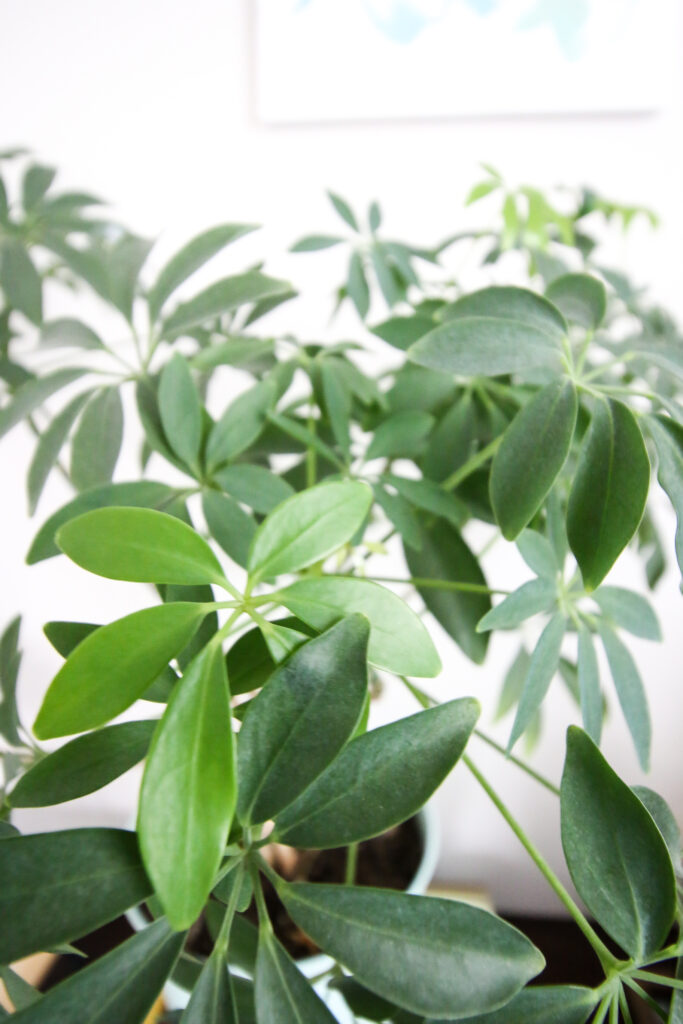
Get potting!
Re-potting Schefflera includes checking for any mites and other pests – these should be addressed immediately before placing your plant in a new pot.
If you choose to prune it before placing it in its new home, you mustn’t use aggressive force.
Although it may be burdensome at times, be as gentle and delicate as possible. After all, the umbrella plant goes through enough stress while you are moving it anyway.
Once you’re done, give it enough time for it to recover.
Be careful when you are transporting the plant from one pot to another. The best practice is to tip the container and slide the plant out of it. If you need help, use your butter knife to loosen the soil.
Examine if the roots are in good shape, trim them a little bit if necessary, and give the Schefflera a test fit to see how far down it sits in the new container.
Add some pebbles in the bottom if you are worried about drainage, and start re-potting your umbrella plant.
Keep an eye on your plant
It will take a few days while the plant gets used to its new environment, but other than that, you are good to go! Ensure it gets plenty of light, and avoid feeding it during that period.
How to repot an umbrella plant
It's easy to repot your umbrella plant when it's ready for a new pot.
Materials
- Umbrella plant
- Well draining soil
Tools
- Pot 1-2 inches larger than current pot
- Knife or scissors
Instructions
- Pull your plant out of it's current pot, gently
- If needed, carefully separate the tangled or tight roots
- Be sure that your new pot has proper drainage. Add pebbles to the bottom if desired, then a layer of soil.
- Add the plant to the pot.
- Fill in around and on top with fresh, well draining soil.
- Pay attention to the plant for the next few weeks. Some shock is normal, but it should bounce back.
If you’re thinking about when to re-pot an umbrella plant, we hope to have given more than enough information to make the process as easy as possible.
If you need some more information on the subject, download our free PDF umbrella plant care guide.
Printable Umbrella Plant care guide
Join the (free!) KeepYourPlantsAlive+ community to access this exclusive printable plant care guide! Once you sign up, you can right click & save the JPG care guide. Or keep scrolling for more!

Thanks for reading!


Hey there, I'm Morgan, a houseplant enthusiast from sunny Charleston, South Carolina. Growing up surrounded by my mom's lush orchids and African violets, I discovered the magic of bringing nature indoors. Thanks to the pandemic, I delved deeper into houseplants, discovering their power to uplift moods and transform spaces. I'm here to spill all my secrets, helping you pick the perfect houseplant - and make it happy. Let's keep your plants alive, together! 😊

